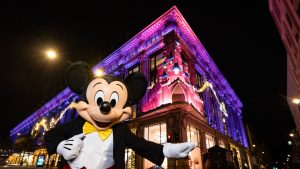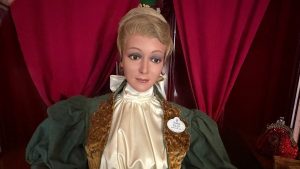This year’s columns have covered a lot of background about the arrival of Disneyland’s Indiana Jones Adventure, which was set for 1995. It was an unexpected (and pleasant) surprise back in 1994 when what was going on behind the scenes was finally revealed. But a few (a very few) guests might have seen some extremely well-hidden clues, including one that remained with us until recent days.
As mentioned before, the first appearance of Indiana Jones in a Disney theme park was the Epic Stunt Spectacular, which opened with the Disney-MGM Studios Theme Park in August 1989. Disneyland’s attraction was announced five years later and would open in 1995.

While that construction fence sign, detailed in last March’s column, revealed the imminent arrival of Indy, there was another big clue sitting right across from the Swiss Family Treehouse in Adventureland. Clear back in 1992 sharp-eyed guests would have noted a slight change in the Safari Outpost clothing shop. Up until that year, text in the Disneyland guide map simply noted that guests who shopped there could “dress for wild adventure.” But in 1992 the text added, “dress for wild adventure with Indiana Jones apparel.”
When the attraction itself opened, the Outpost was renamed the Indiana Jones Adventure Outpost, the official gift shop of the attraction. And somewhere, in the midst of all that, an artifact was installed that would remain for the next thirty years, even after the shop itself closed.
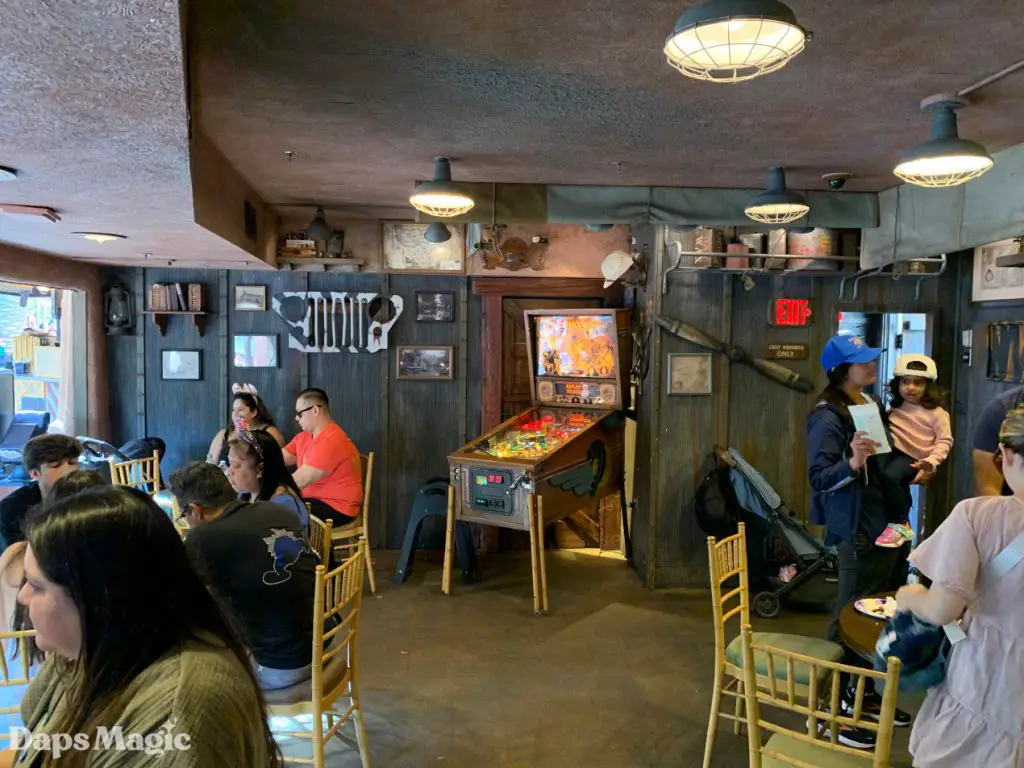
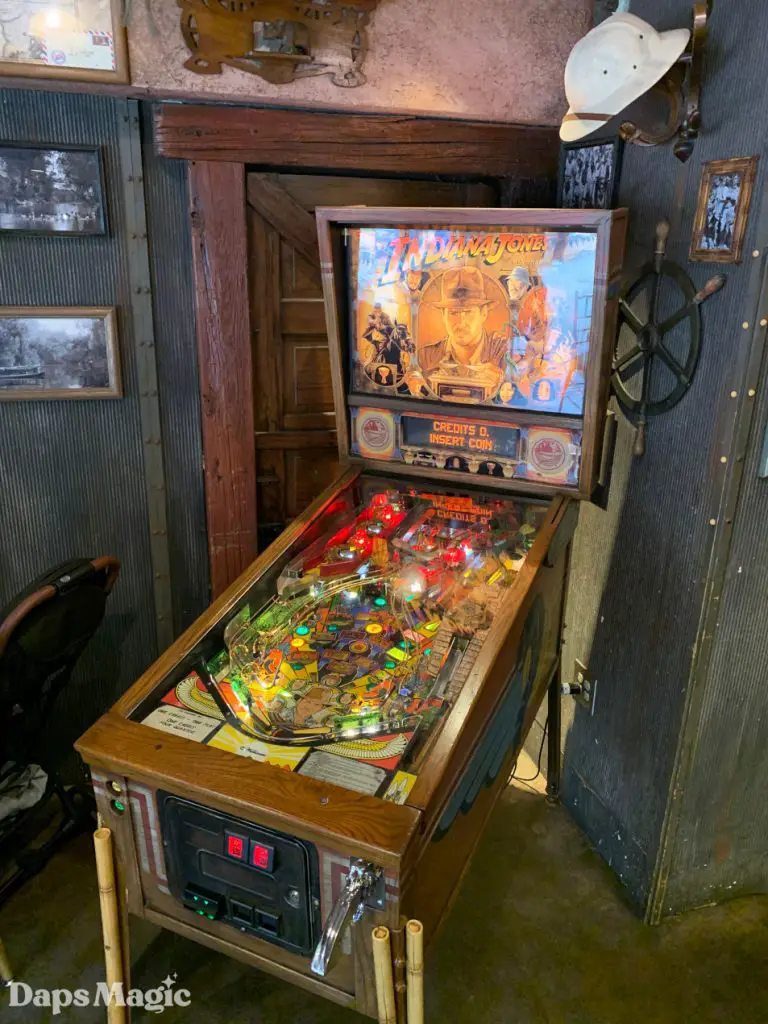
This was Indiana Jones: The Pinball Adventure. This wide-body pinball machine was released in 1993 by Williams. With elements derived from all three of the Indiana Jones movies, this game was also designed to address the competition from video games that had nearly driven traditional pinball games out of existence. Among the twelve “modes” available, three utilized a video screen, built into the backboard. The game was the first to utilize William’s DCS Sound System and included portions of the John Williams score from the films, as well as sound clips featuring the actors. John Rhys-Davies (as Sallah) provided new narration for the game.
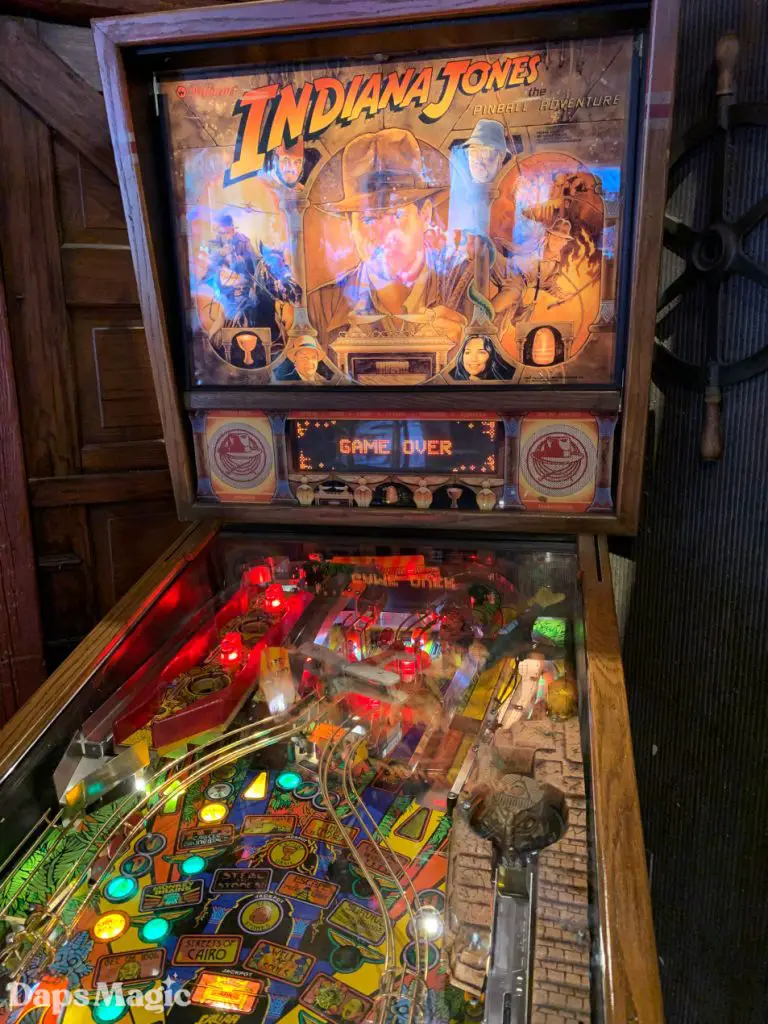
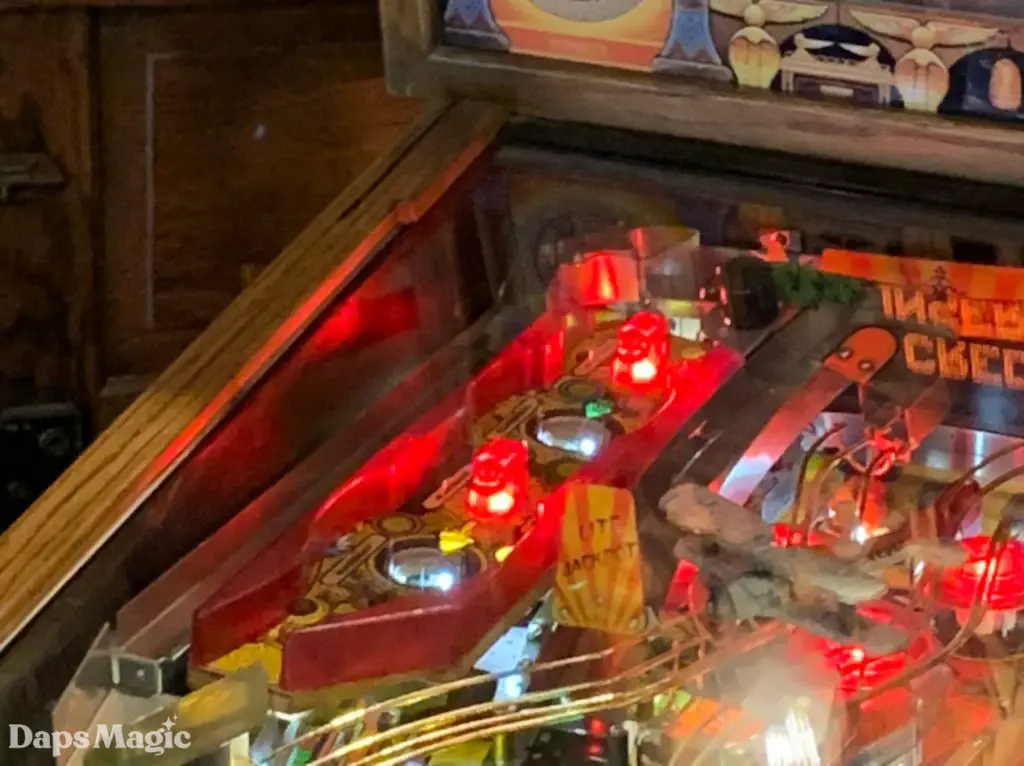
The playing field was lavishly detailed, including a golden idol, planes, and a mini-playfield called the Path of Adventure. Once activated, players could steer the ball left and right down the path, using the flipper buttons.
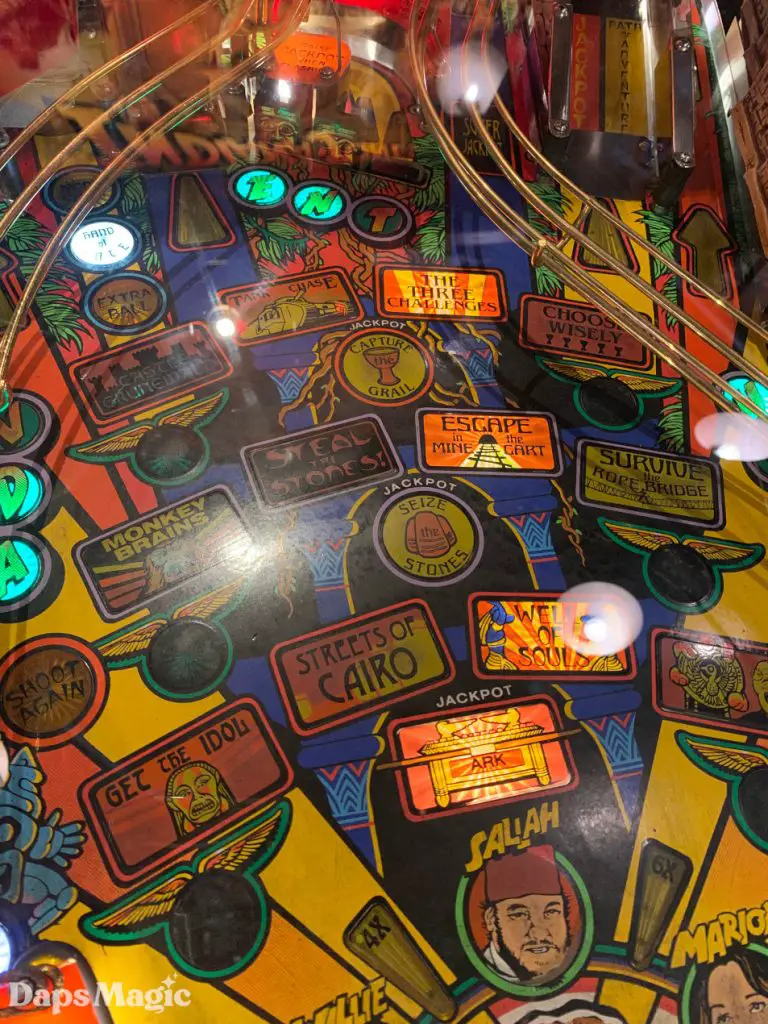
From Raiders of the Lost Ark, the modes were: Get the Idol, Streets of Cairo, and Well of Souls. Raven Bar (Get the Medallion) was the video element. From Indiana Jones and the Temple of Doom, the modes were: Monkey Brains, Steal the Stones, and Survive the Rope Bridge. Escape in the Mine Cart was the video element. Finally, Indiana Jones and the Last Crusade included: Castle Grunewald (Brunwald in the film!), Tank Chase and Three Challenges. The video element was Choose Wisely.
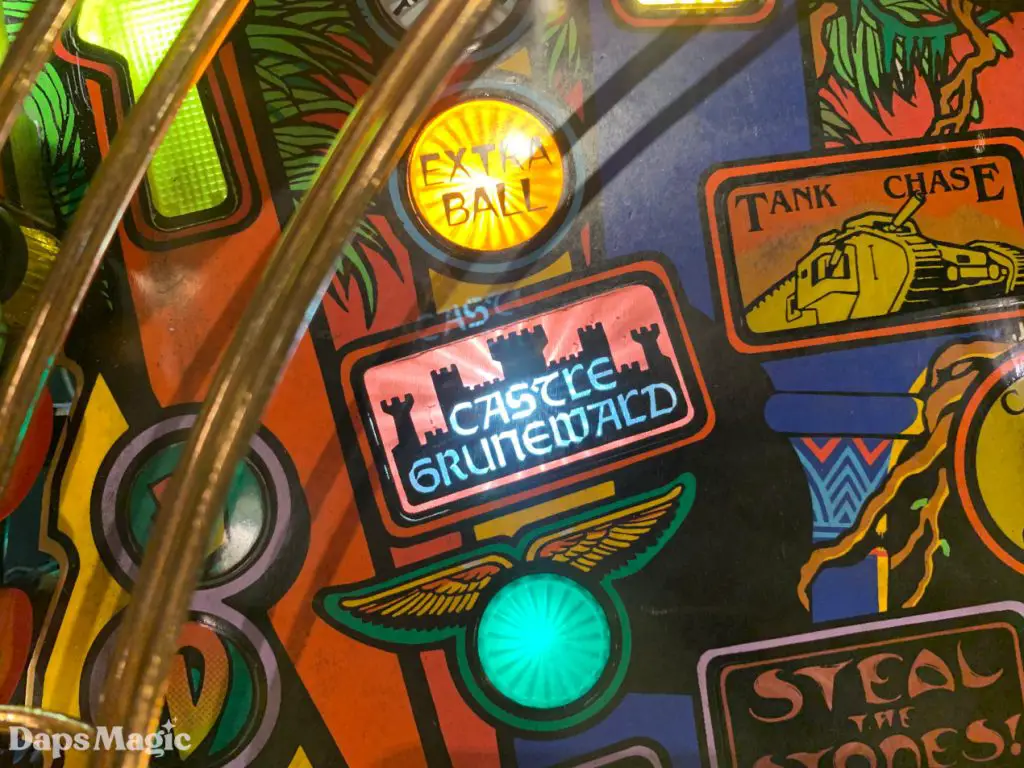

Players also would find four multi-ball modes in the game. By dropping three balls into “locked” holes, all three would be released and would play simultaneously. A quick two ball mode offered increasingly valuable targets, ranging from The Idol of the Incas (ten million points) to The Cross of Coronado (twenty five million points). The designer, Mark Ritchie, hid an “Easter egg” in the game with an additional prize, The Fish of Tayles (thirty million points). This was a reference to Ritchie’s 1992 game Fish Tales and was not an artifact that appeared in the Indiana Jones franchise. The remaining modes, Well of Souls and Eternal Life, were six balls. In Eternal Life one could play six balls simultaneously!
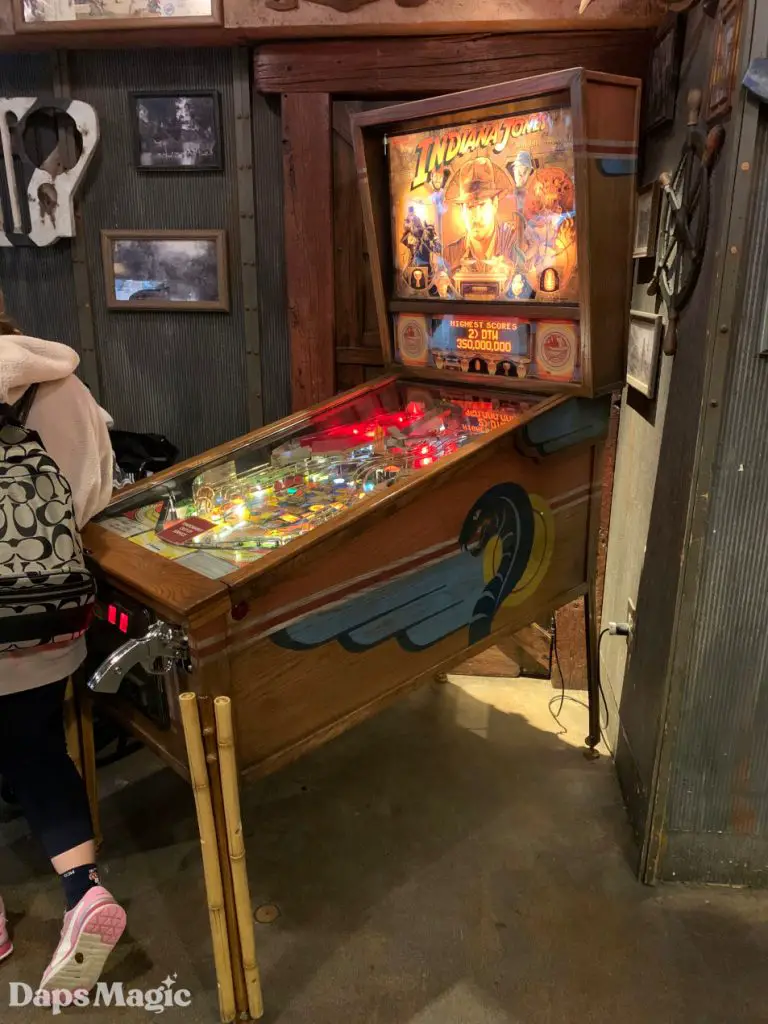
The designers at Disneyland were nothing if not thorough in their choice of this game and placement in the shop. It was, therefore, natural that they would also perform some art direction on it. The case surrounding this Indiana Jones: The Pinball Adventure was customized and executed to blend into the 1930s ambience of the film franchise. The sturdy chrome legs were enhanced with “bamboo” and powder coating to resemble wood. The cabinet’s graphics, derived from the film logo and publicity was replaced with a stylized design featuring a snake. (Why did it have to be snakes?).
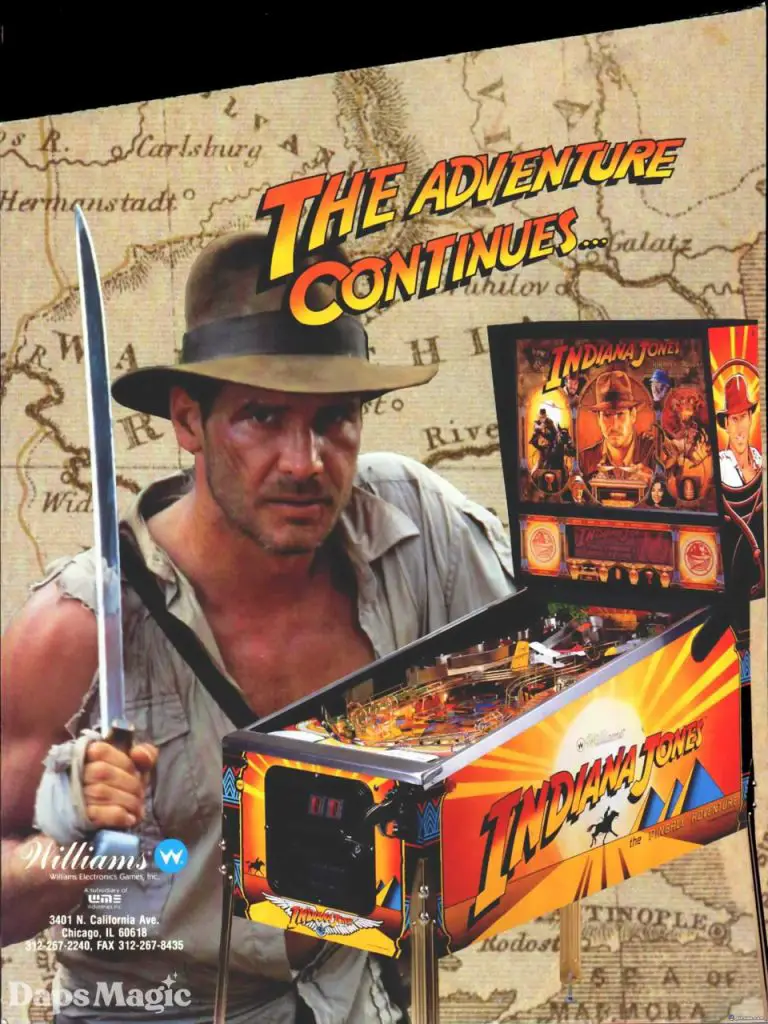
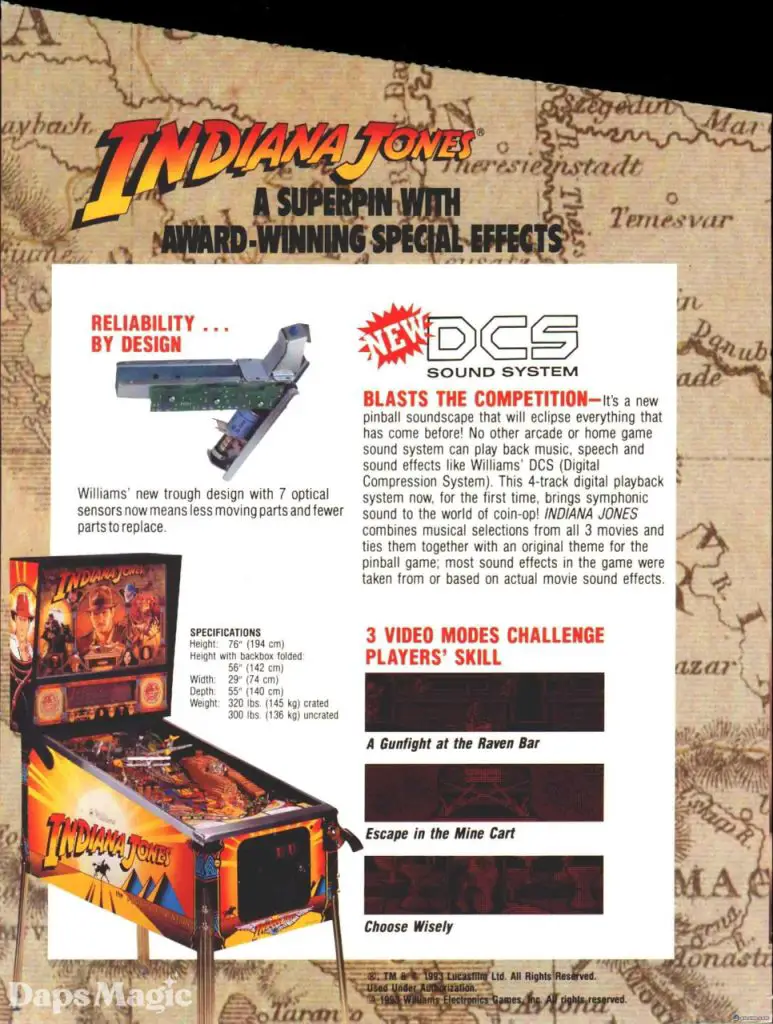
These pages from the 1993 brochure issued by Williams show the original design of Indiana Jones: The Pinball Adventure. It also touted the DCS (Digital Compression System) that promised to “eclipse everything that has come before!” Williams proudly declared that their 4-track digital sound system would bring symphonic sound to the world of coin-op.
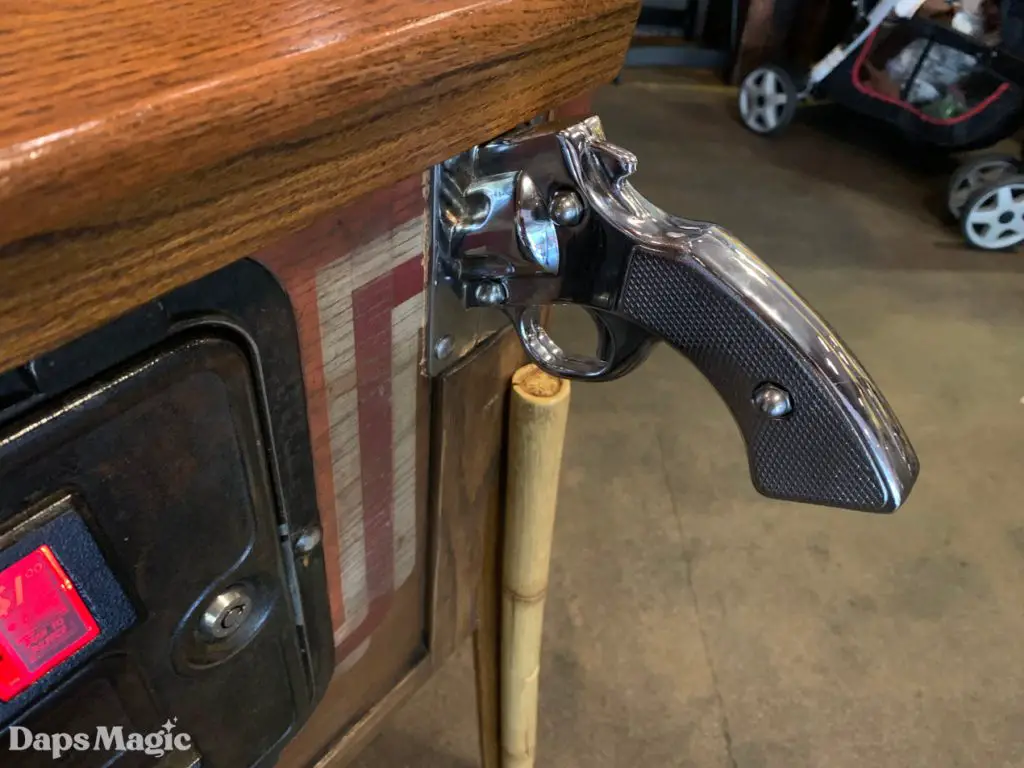
At least one feature of the case was not altered in any way. Rather than employ a simple button or plunger, players of Indiana Jones: The Pinball Adventure set balls in motion by firing Indiana Jones’ trusty pistol. That detail remained intact as long as the game was in place in Disneyland, even after the shop itself closed in June 2017. Today, the area serves as a dining area for the Bengal Barbecue. The game itself was only very recently removed. Hopefully, it will return.
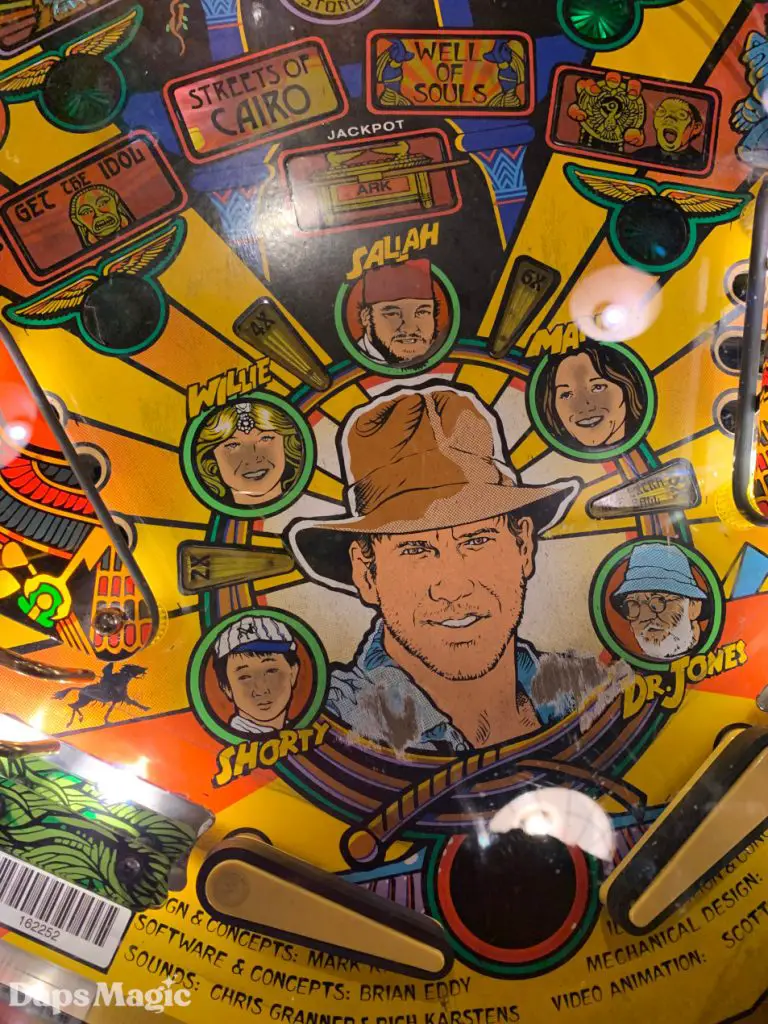
There is one final amusing detail I want to share. Directly above the flippers at the base of the play field there are six portraits of major characters from all three films. Indiana Jones, of course, holds a prominent spot at the center. Arrayed around him are five characters drawn from all three of the original trilogy: Dr. Jones, Marion, Sallah, Willie, and Short Round (Shorty). During gameplay, various of these characters’ images would light up, or even all of them at once.
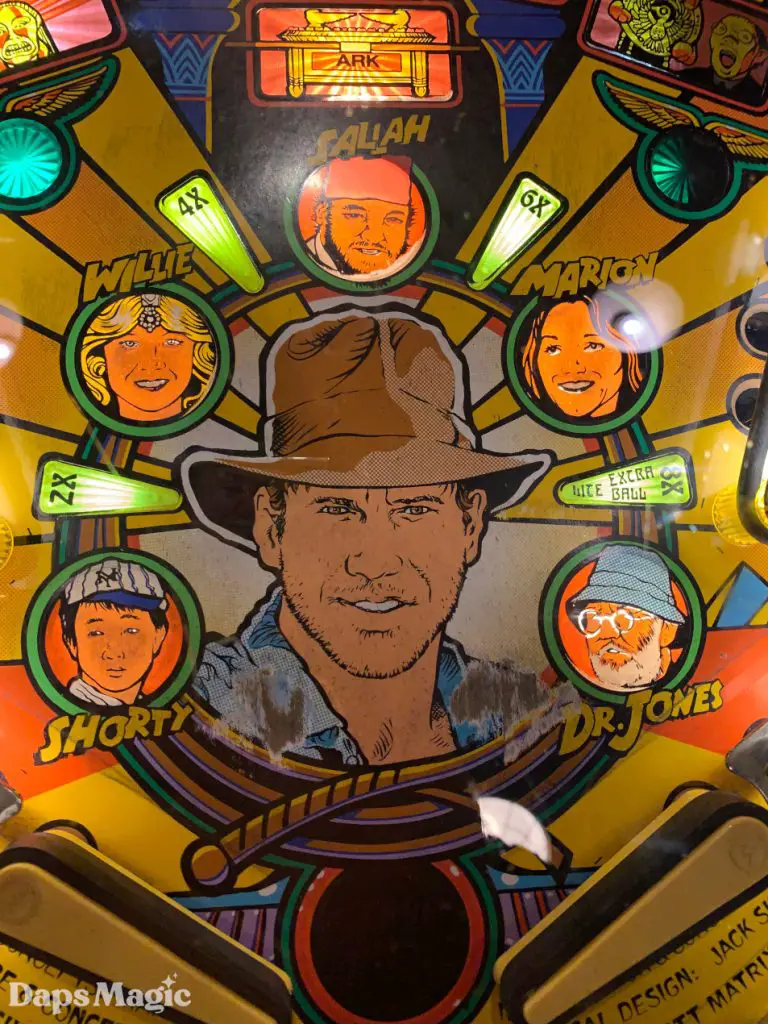
It was notable that as of 1993, only one of the performers had won an Academy Award. This was Sean Connery as Dr. Jones, who was awarded Best Supporting Actor for The Untouchables in 1988. Harrison Ford had been nominated in 1986, for Witness, but had not actually won. By 1993, it would have been anybody’s best guess that if there was just one performer in the group to take home an Oscar in later years (as there was), it would be Ford.
But Harrison Ford remains among a list of distinguished actors who has never won an Oscar. The same is true of both of the women in the group, Karen Allen as Marion and Kate Capshaw as Willie (although Capshaw did cut her career short to marry Steven Spielberg). John Rhys-Davies, despite a fine career including repeat performances in two epic franchises (Indiana Jones and Lord of the Rings), has also been overlooked by the Academy. Which leaves us with…
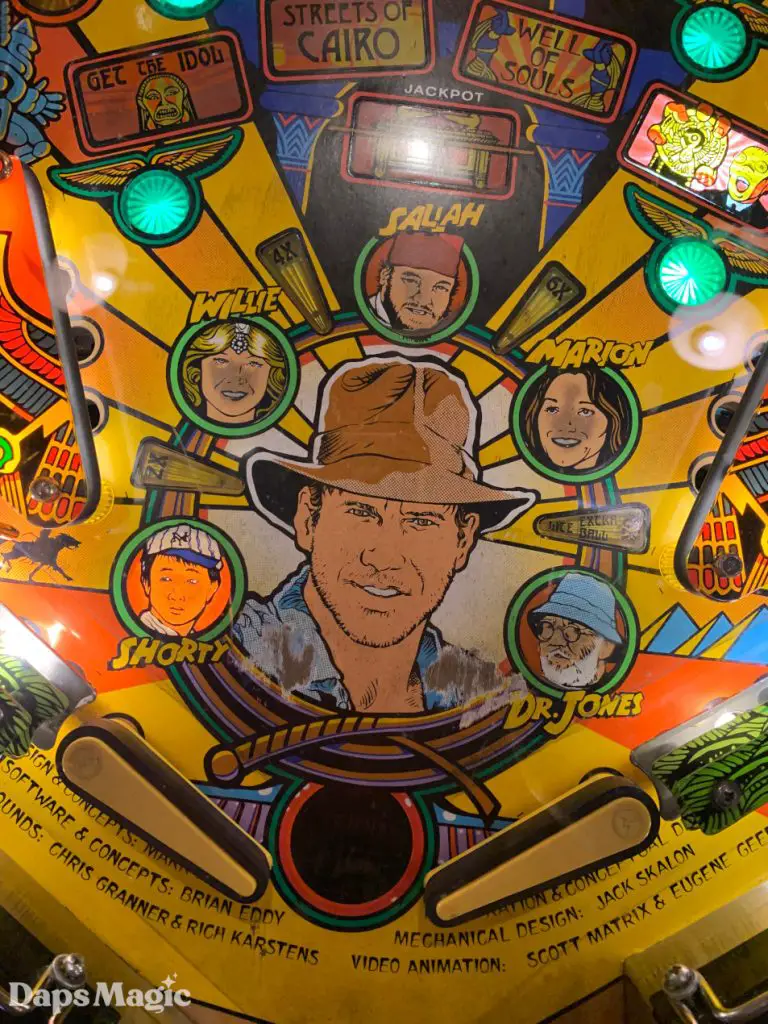
…Shorty. Virtually no one, in 1993, would have pegged the virtually unknown child performer Jonathan Ke Quan as a future Oscar winner. His next role, as the brainy and excitable Data in The Goonies (1985) marked the high point of his early career. Few roles of substance followed, until, as is often the case with child performers, he turned to other areas in the film industry. For twenty years he worked behind the scenes as a fight trainer, stunt choreographer, and assistant director. When the producers of the art film Everything Everywhere All at Once (2022) were seeking a performer to play a long-suffering husband, Ke Huy Quan was considered an unusual choice. But his sterling performance not only captivated audiences, but it also netted the actor the Academy Award for best supporting actor in 2023.
Who would have known this was to be his destiny, gazing down at those blinking lights and spinning balls, thirty years ago at Disneyland.


